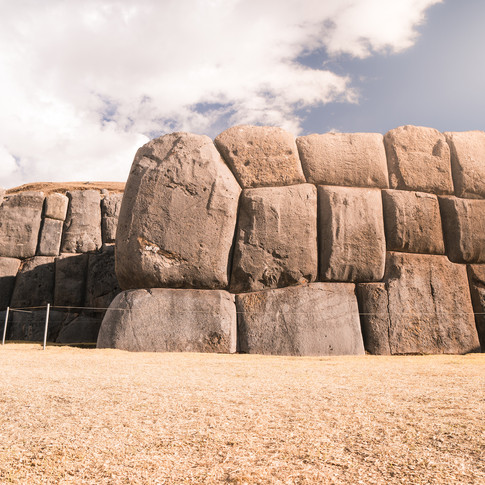Exploring Cusco City and The Sacred Valley
- aforeigner.abroad

- Sep 6, 2018
- 3 min read
Updated: Jun 9, 2019

Most people visit Peru for one reason: Machu Picchu. While Machu Picchu gets all the glory, you'd be remiss not to explore Cusco, a city known for once being the historic capital of the world famous Incan Empire.
The Incan empire lasted from 1438 to 1533 until the 16th century Spanish conquest. Before the Spanish conquistadors demolished the sacred Incan land, Cusco was an unrivaled empire for almost one hundred years. The city's Quechuan name is actually Qosqo, meaning "Navel of the World" because it was the most central and integral part of the Incan empire as we know it. Cusco was a mecca for its people and a place that many dreamed to one day see. Knowing this, we were delighted to explore the city of Cusco and all it had to offer.

Upon arrival, we looked forward to the week ahead but knew it was highly recommended to spend a few days acclimating to the altitude as the city sits at 3,400 meters (11,154 feet) above sea level. In our opinion, what better way to explore a city than by foot as we immersed ourselves in our surroundings? When deciding what tour company to show us the way, Valencia Travel Cusco seemed like the perfect fit for a fun filled day!
We decided to book several tours with them since they had fantastic reviews and seemed extremely reliable. On our first day, we scheduled a half day Cusco City Tour where we explored the city and surrounding ruins. It was the perfect way to introduce ourselves to the wonders of the city while learning about its heritage and history. Some of our favorite highlights from the tour were:
Koricancha, an ancient temple that was built with Incan and Missionary influences.
The main Cathedral, which was built using stones from a local Incan temple, overflowing with local art.
Saqsayhuaman, a massive ruin built with huge stones weighing up to 120 tons!
Q'enqo, Puca Pucara, and Tambomachay, local Inca sites that each had their own unique style and charm.
It was the perfect start to our trip and was exactly what we were looking for when learning about the city. After a good night's rest in our AirBnB, we woke up early the following day to embark on our second excursion, the Sacred Valley Tour where we explored various ruins in Pisac and Ollantaytambo.
Pisac is widely known for its handicrafts market and main square, so we were delighted to browse the markets for hand made alpaca scarves and silver rings. We then made a quick stop for a delicious vegetarian empanada and had a glass of Chicha Morada, a Peruvian classic made of purple corn, cinnamon, lemon, pineapple and sugar. Boarding our bus we headed to our next stop, the Citadel of Pisac, where we we saw the remarkable Intihuatana, "The hitching post of the sun", and stunning views over the Sacred Valley. Talk about an authentic Peruvian experience!

As if the tour couldn't get any better, we drove towards our next destination, the quaint village of Ollantaytambo. This city is one of the best surviving examples of Incan city planning. Surrounded by sacred mountains, with thin, narrow cobblestone streets that have been continuously inhabited since the 13th century you truly feel like you are living in a piece of history, stepping back in time to indigenous country living. But our favorite part to the day was visiting the Temple of the Sun, an Incan ruin that almost gave the optical illusion of a pyramid in the fields when looking at it from afar. The monstrous construction of stones within itself was quite the feat of Incan empire engineering and in person was a magnificent sight to see.
We fell in love with Cusco and the beautiful landscapes surrounding it thanks in great part to Valencia Travel Cusco who provided us knowledgeable guides, comfortable transportation, and memories to last a lifetime. This city and its historical culture left a lasting impact on our understanding of Peru and it's people.

























Comments